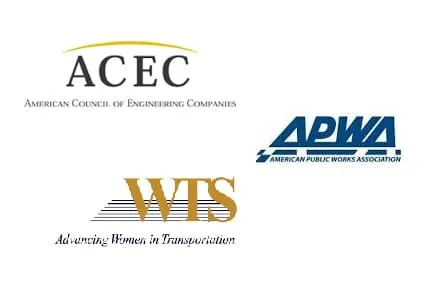How to Network and Find Construction Opportunities

How to Network and Find Construction Opportunities
Networking is a crucial aspect of finding job opportunities in any industry, and the construction industry is no exception. In this post, we’ll be discussing some key strategies for networking and finding construction job opportunities, including how to identify and connect with potential employers, as well as how to make the most of professional connections and industry events
One of the most effective ways to find construction job opportunities is through networking – connecting with professionals and organizations in the industry and building relationships. Here are some key strategies for networking in the construction industry:
Identify key players in the industry: Research companies and organizations that are active in the construction industry, and make a list of the key players in your area. This can include contractors, suppliers, trade associations, and other organizations that are involved in the construction process.
Connect with professionals: Reach out to professionals in the construction industry and introduce yourself. This can be through LinkedIn, professional organizations, or industry events. Make sure to have a clear idea of what you’re looking for and be prepared to explain your background and goals.
Join professional organizations: Many trade associations and other professional organizations have local chapters that host events and provide networking opportunities. Joining one of these organizations can be a great way to connect with other professionals and learn about job openings and other opportunities.
Attend industry events: Industry events such as trade shows, conferences, and networking events can be excellent opportunities to connect with professionals and learn about job openings. Make sure to bring business cards and be prepared to introduce yourself and explain your background and goals.
Utilize online resources: There are many online resources that can help you connect with professionals and organizations in the construction industry. LinkedIn is a particularly valuable resource for finding job
Michael DeSafey is a leading executive recruiter for professionals in the construction, engineering, and environmental industries. He is currently the President of Webuild Staffing: www.webuildstaffing.com. To learn more about Michael, or to follow his blog, please visit www.michaeldesafey.com.
Category: Career Training, Construction, Interview And Job Search Tips, Jobs
Skills You Weren’t Taught in School – Networking For Career Success

Skills You Weren’t Taught in School – Networking For Career Success
At first you will find it tough going, but with time and experience, it becomes like second nature. Because you know the why, and have learned the how.
One of the most difficult activities engineering and environmental professionals are tasked with is Business development; networking. You understand the technical aspects to your job; the science and engineering (the why), but the how (how to build relationships, how to establish clients, and how network with associates) is beyond your education. This is a skill you most definitely were not taught in school and need to develop as a professional to advance your career. But where do you start?
Here are some tips on how to network:
- It’s important to remember that no one ever died from networking (we checked).
- Start out by attending an association luncheon. If you choose an event with a speaker or topic that you’re interested in you’ll have something to talk about during the networking session.
- Bring cards and be prepared with your elevator speech. This is who you are, who you work for, and how your firm relates to the days topic, in 30 seconds. If your marketing department doesn’t have that message crafted, try Google.
- Have a plan. If the event attendees aren’t listed online, show up to the event early and scan the name tags. Make a mental note of who you’d like to talk to.
- If you recognize a name of someone you don’t know but would like to meet (a decision maker at a potential client firm, perhaps), hang out at the registration table and see who picks up that name tag.
- As other attendees show up, it’s ok to make a beeline for a friendly face. Ask your friend to introduce you around. Caveat: don’t hang out with your friend for the entire networking session. Give her time to mingle on her own; make sure you mingle on your own as well.
- The easiest way to find someone to talk to is locate a person standing by himself, wishing he were anywhere but there. Put your nerves aside, walk up, and say hi.
- (Speaking of nerves, it’s perfectly normal to be nervous. Many seasoned business development professionals get butterflies before every networking event).
- The best ice-breaker is to ask your new acquaintance about himself. People loveto talk about themselves.
- Ask open-ended questions. A yes-or-no question is a conversation killer. Lead him with questions that lead to more questions, but don’t interrogate him!
- It’s ok, even preferable, to talk about topic other than business. Relationships are developed over time by getting to know someone as a person, instead of potential work.
- Know when to move on. Don’t monopolize one person’s time, or let one person monopolize yours. Once you make an acquaintance, learn about him and exchange information, move on.
- Make it your goal to meet at least three new people during the networking time. This will keep you moving around and maximize the use of your time.
- When it’s time to be seated for lunch DO NOT sit with someone you’ve already talked to. This is the time to find one of the people you want to meet and find a seat at, or near, her table. Introduce yourself and chat for just a moment, with a promise to follow-up at a later time.
- Once everyone is seated, pass a stack of your cards around the table. Everyone else should do the same. Then introduce yourself to the people on either side of you. Keep the conversation light. Now is not the time to set meetings or discuss projects.
- Please, please, use common sense when making conversation! Politics, religion, sex, or anything controversial is off-limits.
- Industry gossip, no matter how juicy, is also off-limits. You don’t know who knows who, and the very nature of gossip is negative. Don’t get drawn into it.
- After the presentation is over, close the loop with your table mates and the other people you talked to. Everyone has to get back to work, so now is not the time to strike up an in-depth conversation.
- The most important part of any networking event is the follow-up. Send an email to every person you met. Remind them of your conversation, provide any information you promised to share, and ask for a follow-up meeting.
The more often you attend events, the wider your circle of contacts becomes. Keep in touch with your network. Develop relationships, share information, and move forward in your career.
When you’ve built your network and are ready for new opportunities, contact us. We work with a large group of industry leaders who are interested in hiring quality engineers.
Michael DeSafey is a leading executive recruiter for professionals in the construction, engineering and environmental industries. He is currently the President of Webuild Staffing www.webuildstaffing.com . To learn more about Michael or to follow his blog please visit www.michaeldesafey.com
Networking for Success – Top Professional Organizations for Engineers

Networking for Success – Top Professional Organizations for Engineers
The common-sense place to start is with national organizations that include all industry disciplines. These groups offer the most comprehensive opportunities to move your career forward.
American Council of Engineering Companies (ACEC) – This is the premier national organization for engineers. ACEC advocates for the industry on a state and national level, and the extensive list of benefits include sample contracts, QBS support, and a robust job bank. There are many opportunities to get involved at the local, state and national level.
Local chapters offer excellent networking within each region. Monthly luncheon meetings provide insight into the market and are a great venue for forging and strengthening relationships. The entire spectrum of the industry is represented at ACEC meetings, making it the organization to join.
American Public Works Association (APWA) – Municipal public works departments are represented at the state and national level by the APWA. Membership is open to all industry-related firms; APWA is the best organization for professional engineers who focus on municipal projects.
While chapter meetings include topics of interest to city engineering staff, the information is often relevant to the private side of the industry. Committees at the chapter level enable engineers at private firms to get involved and forge stronger relationships with the public works leadership.
Women’s Transportation Seminar (WTS) is an international organization that focuses on regional, and state transportation agencies. Membership is open to the entire A/E/C industry. While the core principles of the organization are to advance women in the transportation industry, men are welcome and comprise a large percentage of the membership.
Local meetings cover such topics as transportation legislation, funding and upcoming projects. WTS is a great venue for engineers who design highways, heavy and commuter rail, transit and aviation facilities. As with the other organizations discussed here, the networking and committee opportunities are excellent. National leadership are often called upon to advocate for transportation funding or regulations in Washington, DC.
When you’ve conquered your wall and are ready for new opportunities, Webuild Staffing works with a large group of industry leaders who are interested in hiring quality engineers.
Michael DeSafey is a leading executive recruiter for professionals in the construction, engineering and environmental industries. He is currently the President of Webuild Staffing www.webuildstaffing.com . To learn more about Michael or to follow his blog please visit www.michaeldesafey.com
Reasons Why Your Resume Maybe Getting Ignored….

How To Get Your Resume Noticed And Be Successful In Your Job Search.
Reasons Why Your Resume Maybe Getting Ignored….
Have you been sending resumes out for a while now and not getting any responses? Well it may be your resume, but it may also be the nature of the industry and how employers are screening and searching for candidates these days.
As technology has grown employers now have a wealth of information at their fingertips, so the resume has become one of many tools employers use to screen and source candidates.
As a candidate you need to make sure you have all your bases covered to assure an employer will give you a call back. Here are a few tips to make sure your resume is read and an employer is prompted to call you back.
- Does your resume look professional? Make sure you have a professionally formatted resume. Resumes are images of you and your career. So making sure your resume is professionally worded and formatted is of prime importance.
- Make sure you name, address, phone number and email address is on your resume!! So many times candidates send out resumes without contact information or limited contact information on their resume. This is a sure turnoff for an employer to skip over your resume. They want to know if you are local, how to get ahold of you and talk with you. So make sure this information is at the top of each page of your resume.
- Use a professional email address. As a candidate you always want to put you best foot forward. Using email address that is not professional looking is a sure turn-off for an employer. The best email address format for your career should be your initials or first initial, last name formats, not vanity or lifestyle names.
- Make sure you have a LinkedIn Profile and it is up to date. In the last 5 years or so LinkedIn has become the recruiter’s site of choice to learn about candidates and your professional career. Many employers will check LinkedIn even before giving you a call back. So, make sure you profile is updated with a professional picture (not selfies) and career history. Attached writing samples or presentations you have made to your profile. Get endorsements from co-workers helps immensely.
- Clean up your social media. By searching google anyone anywhere can find you and what you have posted to the web. You want your image to be the most professional possible. So clean out those old tweets, Facebook posts, images that may not be so flattering to your career, as this will all impact if an employer will call you.
- Be present on google and other search engines as it is related to your career and profession. Join associations, post presentations, comment on industry websites forums. You want to show to the world you are a professional with the skills and qualifications to provide a valuable contribution to an organization in your industry.
- Don’t apply for 5 different positions at the same time in the same company. Believe it or not, your resume will probably be reviewed by the same person for each position you apply for. So, apply once and then follow-up. Don’t bombard and employer with many copies of your resume and do not repetitively call a hiring manager 20 times in one day. Plan out your application process with an employer and then proceed.
- Be Proactive. Do not just sit by the phone waiting for a call. Network with industry professionals, talk with hiring managers about their needs, and learn about companies and how you can make a contribution. Most employers hire based on who they know, so start meeting people. The applying for jobs over and over is just not going to do it in today’s marketplace.
- Use common sense. Most employers are human and want to hire good employees that care about their jobs and want to do a good job. So be yourself, think about the career you want and then pursue it. Do not just go out to the job market unprepared for your job search. Focus your efforts, get prepared and be consistent in your search efforts.
Following these few tips will allow you as a jobseeker to get that cherished call back from a potential employer and be successful in your job search. Finding the right position to advance your career to the next level may come from a surprising source and it may not be from just replying to job ads.
Michael DeSafey is a leading executive recruiter for professionals in the construction, engineering and environmental industries. He is currently the President of Webuild Staffing (www.webuildstaffing.com ). To learn more about Michael or Follow his Blog please visit www.michaeldesafey.com
Tweet Your Way To Your Next Job – In Less Than 140 Characters

How To Use Twitter To Find A Job And Build A Professional Brand
Tweet Your Way To Your Next Job – In Less Than 140 Characters
Over last decade Social media has become a powerful networking tool, so much so, that many professional recruiters and human resource professionals are now utilizing it significantly to find exceptional job candidates.
Throughout the corporate world whether you are in the construction, engineering, environmental or any other industry, harnessing the power of twitter can help you gain visibility, feature accomplishments and even obtain your next exceptional career advancement opportunity.
To be effective with Twitter though, you need to plan out a long term strategy for using it as a professional; social media can help you accomplish great things, but it may also be your
worst nightmare if done incorrectly. Managing your profile, building your network and timing tweets are all important aspects to consider in utilizing Twitter to find your next career opportunity.
Your Profile
Your profile presents you to the world. It is the first thing that an individual will see when they look at your Twitter profile. So make sure it is professional and consistent with all your social media accounts.
Upload a professional headshot of yourself; describe your skills and occupation concisely. Your profile should lead the reader to want to learn more about you and direct them to a location where they will be able to get this detailed information.
Profile Consistency
Your online image should be consistent across all your professional social media accounts; whether Twitter, LinkedIn, Facebook, etc.. you need to create a brand that sticks out in the viewer’s mind. So whether you are on Twitter or LinkedIn that branding needs to be the same.
Consistency when it some to social media is of prime importance. Your Twitter handle and other social media account user names should utilize your name. This will allow recruiters to find you quickly online through a google or social media account search, pulling up all the relevant information about you quickly.
It is suggested to use your name as a handle (ie..@Johndoe); if for any reason your name is not available you can always include your profession in your handle (ie.. @jobdoe_UrbanPlanner). This will add an additional level of credibility to your professional image.
As Twitter limits you to 160 characters in your profile you need to additionally describe your professional background precisely and lead the reader to either a personal website or LinkedIn profile where they can learn more detailed information about you and your qualifications.
Start Following People
As twitter is essentially an open network, it allows you to follow just about anyone you may want and communicate with individuals you may not have any relationship with currently. This is a great tool for building your professional networks; circulating your name among other professionals and leaders within your specific industry will get you noticed and recognized by others.
A good strategy is to begin following influential industry leaders; the Project Managers, Vice Presidents, Presidents of other firms you may want to work for. It will allow you some insight into their companies, projects, corporate needs. By utilizing a basic search on Twitter or any directory service you should be able to find these individuals rather quickly.
Make your tweets count.
So your profile is now complete and you have begun following individuals and building your network. Now is the time to begin tweeting, sharing your thoughts and presenting to the world your skills, accomplishments. Your objective now turns to building the reputation that will get you noticed by industry leaders.
You now have a platform that allows you to share your expertise, but you need to use if effectively. Present yourself as an expert in your field, tweet timely and relevant information that your followers will have some interest in. Utilizing current news, projects, industry developments, etc.. are all good things to tweet. The most effective tweets will be those that link your social media or personal websites together. Posting an article on LinkedIn and tweeting about it or placing a free document on your personal website that individuals can download will all garner attention and showcase your expertise.
Being perceived as an expert will greatly enhance your abilities to be found by recruiters. As today’s job market is very competitive you need to show the value you would bring to an organization; Twitter and other social media allow you an easy and free way to do this, impacting directly the most influential people to your job search.
Michael DeSafey is a leading executive recruiter for professionals in the construction, engineering and environmental industries. He is currently the President of Webuild Staffing (www.webuildstaffing.com ). To learn more about Michael or Follow his Blog please visit www.michaeldesafey.com
Unemployed? Looking For a Job? Why Not Volunteer!!

Unemployed? Looking For a Job? Why Not Volunteer!!
So you’re unemployed and looking for a job!! Do you know that the average job search takes about 6 months to find the right career opportunity?
So what are you going to do in your down time? Well, the most obvious thing to do is to search for a job which should be your main priority; but many individuals today are also turning to volunteering with a non-profit to keep active and their skills sharp while looking for a job.
Volunteer you say? Why do that? Well, it is obvious you may be hesitant to volunteer for a non-profit while you are out of work, have life changing events happening in your life and struggling to find a job; but the numerous benefits of donating your skills while unemployed will outweigh the small downside it may have.
Today there are many, many worthy non-profit organizations around the country looking for skilled and talented individuals to help their organizations succeed with their objectives. Many actively search for volunteers for bookkeeping, marketing, engineering, construction, public relations, medical, etc… Positions can range from board membership opportunities to hands on daily technical support with the non-profit.
The Key is to find the right type of volunteering opportunity. Ones that will allow you to continue utilizing your skills, build an ongoing track record while unemployed and network with professionals while your are working for the non-profit. Many individuals have found permanent, paying job opportunities through their activities with a non-profit. In fact the ones who do find a job through this method have reported being 85% more satisfied in their new role than they were with their previous employer.
So how do you do this quickly with very little effort on your part?
Many are surprised how easy it is, to find these opportunities. You can go to volunteer websites like www.volunteermatch.org , www.idealist.org who have 1000’s of volunteer opportunities listed or simply search google for volunteer opportunities or local charities in your area that you support and have an interest in. You will be surprised as to how many opportunities will come up. Make a phone call, express your interest and see where it takes you.
You will be amazed as to how rewarding volunteering can be.
Michael DeSafey is a leading executive recruiter for professionals in the construction, engineering and environmental industries. He is currently the President of Webuild Staffing (www.webuildstaffing.com ). To learn more about Michael or Follow his Blog please visit www.michaeldesafey.com
